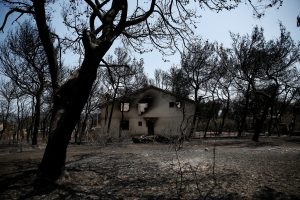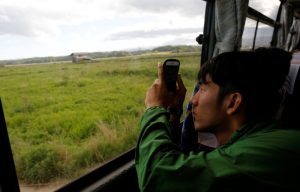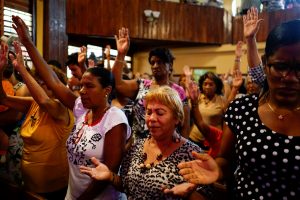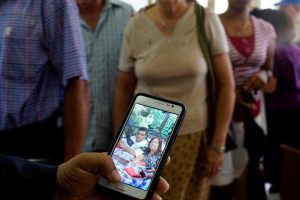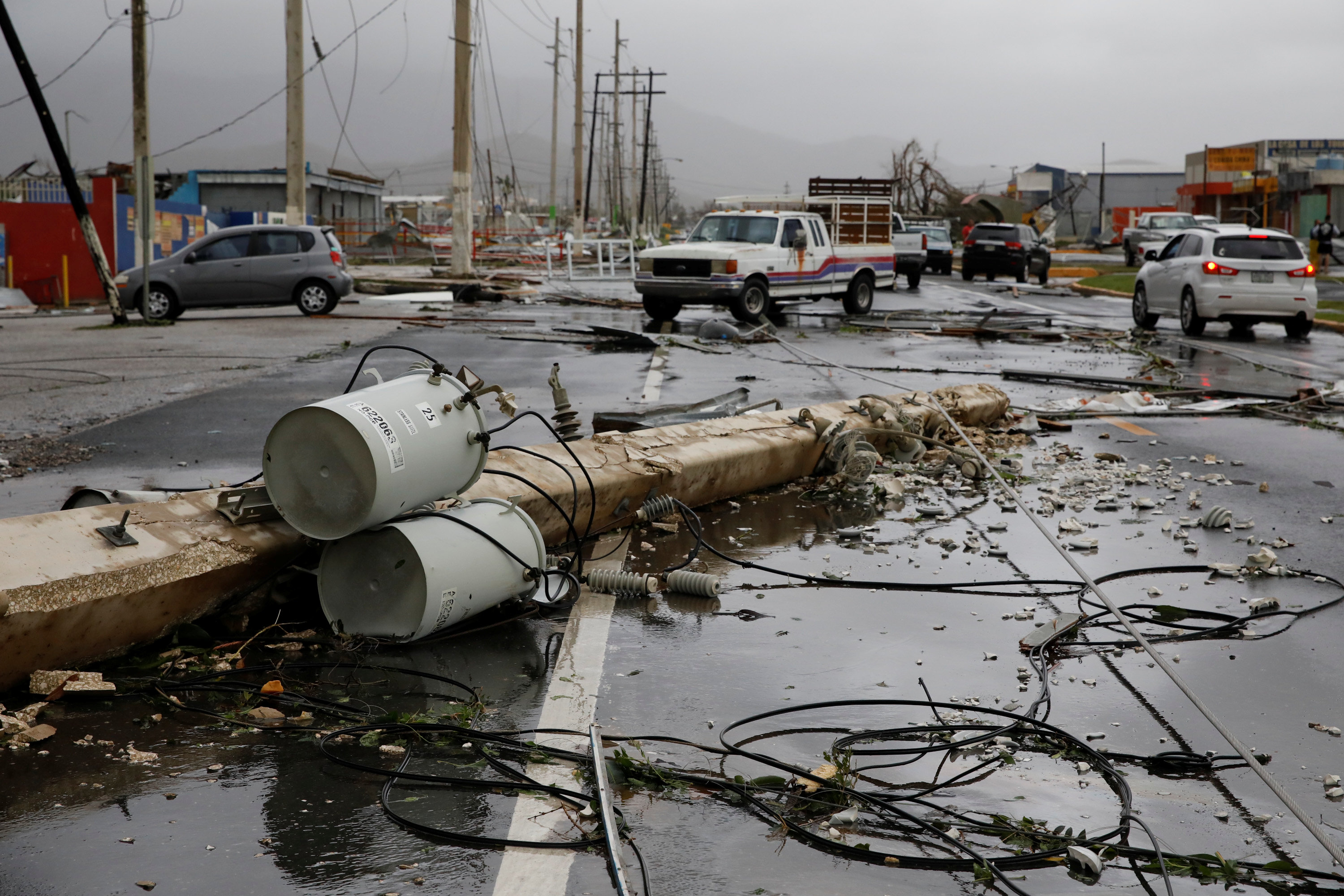
By Robin Respaut and Alvin Baez
KISSIMMEE, Florida (Reuters) – At Leslie Campbell’s office in the central Florida city of St. Cloud, the phone will not stop ringing.
Director of special programs for the Osceola County School District, Campbell helps enroll students fleeing storm-ravaged Puerto Rico.
Her job has been a busy one. Since hurricanes Irma and Maria devastated the Caribbean in September, over 2,400 new students have arrived in the district. That is enough to fill more than two typical-sized elementary schools. Dozens more youngsters show up weekly.
“We’re just inundated, from the minute we come in, to the minute we leave,” said Campbell, who helps families obtain transportation, meals and clothing.
Across the country, state and local officials are scrambling to manage an influx of Puerto Ricans, a migration that is impacting education budgets, housing, demographics and voter rolls in communities where these newcomers are landing.
Florida, already home to more than 1 million Puerto Ricans, is on the front lines. About 300,000 island residents have arrived in the state since early October, according to Florida’s Division of Emergency Management. The influx is nearly 2.5 times the size of the Mariel boat lift that brought 125,000 Cubans ashore in 1980.
Some Puerto Rican arrivals have passed through Florida on their way to New York, Pennsylvania, Texas and other states. Some may eventually return home. But many will not. The island is still reeling months after Hurricane Maria, a Category 5 storm, wreaked catastrophic damage to homes, businesses and infrastructure. Nearly 40 percent of residents still lack electricity. The economy has been devastated.
For Florida, the inflow of Puerto Ricans is altering public budgets and perhaps the political calculus in a state that President Donald Trump won by a slim margin in 2016. Puerto Ricans, who are U.S. citizens, are on pace to overtake Cuban-Americans within a few years as the state’s largest Latino voting bloc. Many criticized the Trump administration’s hurricane response as inadequate.
Politicians are taking notice. Florida’s Republican Governor Rick Scott has reached out to these newcomers. The state has opened reception centers where Puerto Ricans can apply for food stamps and Medicaid, the federal healthcare system for the poor. Scott has asked for an additional $100 million in state spending to house arriving families, many of whom are doubled up with relatives or packed into aging hotels.
Washington, meanwhile, continues to wrestle with the question of how to help Puerto Rico, having long rejected the idea of a federal bailout for the insolvent U.S. territory, which filed for a form of bankruptcy in May. Congress appears unlikely to grant anywhere near the $94.4 billion the territory’s leaders estimate it would take to rebuild.
As federal lawmakers dither, state and local taxpayers are watching the tab to resettle islanders grow.
Statewide, more than 11,200 students from Puerto Rico and the U.S. Virgin Island have enrolled in Florida public schools since the storms, according to the governor’s office. Most arrived after a deadline that determines state funding based on enrollment, resulting in an estimated loss for local districts of $42 million during the 2017 fall semester, a Reuters analysis shows.
Requests for public assistance climbed by 5 percent in Florida during the last three months of 2017, compared to the same period in 2016, according to state figures. Federal food stamp issuance, driven by victims of hurricanes Irma and Maria, jumped 24 percent or $294 million over the same period.
The state is also seeing more extremely ill patients from Puerto Rico.
Keyshla Betancourt Irizarry, 22, came to Florida in October on a humanitarian flight with her mother and brother. Suffering with the blood cancer Hodgkin’s Lymphoma, Betancourt was deteriorating fast on an island whose healthcare system is in tatters.
Now living in Orlando, she is on Florida’s Medicaid plan, which pays for her radiation treatments. The family has no plans to return to the territory.
“I cannot get the best medical help in Puerto Rico, and it has become even worse after Hurricane Maria,” Betancourt said.
Medicaid patients cost the federal government more on the mainland than in Puerto Rico, because Washington caps Medicaid funding sent to its territories. Such costs will only grow if Congress fails to stabilize Puerto Rico, said Juan Hernandez Mayoral, former director of the Puerto Rico Federal Affairs Administration, which represents the territory in Washington.
“You can pay for it in the 50 states or you can pay much less in Puerto Rico,” Hernandez said. “The hurricane has sped up the migration.”
A Reuters photo essay (http://reut.rs/2AQmzh6) captures images of displaced Puerto Ricans in Florida.
CLASSROOM SQUEEZE
Central Florida was one of the country’s fastest-growing regions even before the disasters as Puerto Ricans fleeing a sputtering economy flocked here for jobs in the booming tourist trade. An estimated 360,000 have settled in the area, the largest concentration in Florida.
The Osceola County school district has enrolled thousands of new students in recent years, including nearly 2,700 in 2015-2016 alone. To accommodate them, the district hired more bilingual teachers, converted offices into classrooms, added portable units and built a new middle school. In 2016, voters approved a half-cent sales tax to provide more funding.
Hurricane Maria has compounded the urgency.
“We have students coming without clothes or records. Some are exhibiting symptoms of post-traumatic stress,” said Kelvin Soto, an Osceola County school board member. “We’re handling it well, but it’s straining our resources.”
Recent arrivals include Felix Martell and his five-year-old daughter Eliany, who settled in Ocala, Florida, about 80 miles (129 kilometers) northwest of Orlando. Martell is the sole caretaker for the child after his wife died two years ago. He worried Eliany’s education would suffer in Puerto Rico due to lengthy school closures following Maria.
Father and daughter are now living in a run-down hotel paid for by the Federal Emergency Management Agency. Martell has yet to find a job. Still, he said there is no turning back.
“The girl has learned more in three weeks of school here than in the entire semester on the island,” he said. “I am concentrating on her future.”
TIGHT HOUSING
A shortage of affordable housing is acute for Puerto Rican emigres.
The Community Hope Center, a nonprofit in Kissimmee, Florida, south of Orlando, has been besieged with requests for shelter, according to Rev. Mary Downey, the executive director.
“People are calling us and saying, ‘we’re homeless now,'” Downey said. “It’s awful. There is simply not enough housing to meet the needs.”
Central Florida housing is a bargain compared to places such as New York or San Francisco, but it is beyond the reach of many newcomers lacking savings or jobs. Homes under $200,000 sell quickly, and Orlando-area rents are growing faster than the national average. Local officials say the situation could worsen as families that are doubling and tripling up eventually seek their own places.
Deborah Oquendo Fuentes, 43, and her 11-month-old baby girl Genesis Rivera share a FEMA-paid hotel room in Orlando after fleeing Puerto Rico in October. Oquendo, who found a part-time job that pays minimum wage, fears they will be homeless when that assistance runs out this month.
“I don’t have enough money to move to another place,” Oquendo said. “I feel alone, and I’m afraid.”
(Reporting by Robin Respaut and Alvin Baez; Editing by Marla Dickerson)

